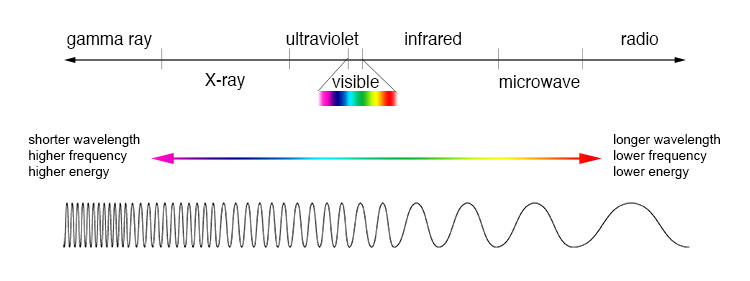What are Electromagnetic Waves?
Electromagnetic waves play an important part in our everyday lives. Most people don't think about it but many of our activities we perform daily would not be possible if it wasn't for electromagnetic waves. These activities range from listening to music in our vehicles to just simply being able to see with our eyes.
Electromagnetic waves are a special kind of wave that, unlike sound waves and water waves, can travel without a medium and through a vacuum. These waves are created when a particle vibrates and produces energy in the form of electromagnetic radiation. This energy consists of two components, an electric and a magnetic component. These waves travel outwards from the source and oscillate
 |
| https://www.nde-ed.org/EducationResources/CommunityCollege/RadiationSafety/Graphics/elec_mag_field.gif |
perpendicular to the direction of motion. The electric and magnetic oscillations however are in two different planes perpendicular to each other.
Electromagnetic waves travel at a
speed of 299,792,458m/s which is also known as the speed
of light. The reasoning for this name is because light is
an electromagnetic wave. These waves can be categorized by
their frequency on a scale known as the Electromagnetic
Spectrum. Visible light is only a small fraction of the
spectrum ranging from frequencies of 4 x 1014 Hz which is
red light to 8 x 1014 Hz which is violet light. Because
all electromagnetic waves travel at the same speed as the
frequency of the wave goes up the wavelength goes down.
This means that the frequency of the electromagnetic wave
is inversely proportional to the wavelength of the wave.
 |
| https://imagine.gsfc.nasa.gov/Images/science/EM_spectrum_compare_level1_lg.jpg |
Higher frequencies on the spectrum
include ultraviolet, X-ray, and gamma ray waves and lower
frequencies on the spectrum include infrared, microwave,
and radio waves. These waves are not visible to the human
eye but with modern devices we can detect these waves and
use them to our advantage. Radio waves are used in many
devices that we use on a daily basis. For example radios
receive radio waves and can then interpret those waves as
a sound. Our phones also rely on radio waves to send and
receive a signal. Doctors use X-rays when looking at our
bones to see if anything is broken or not. Also microwaves
are used in our homes to heat up our food.